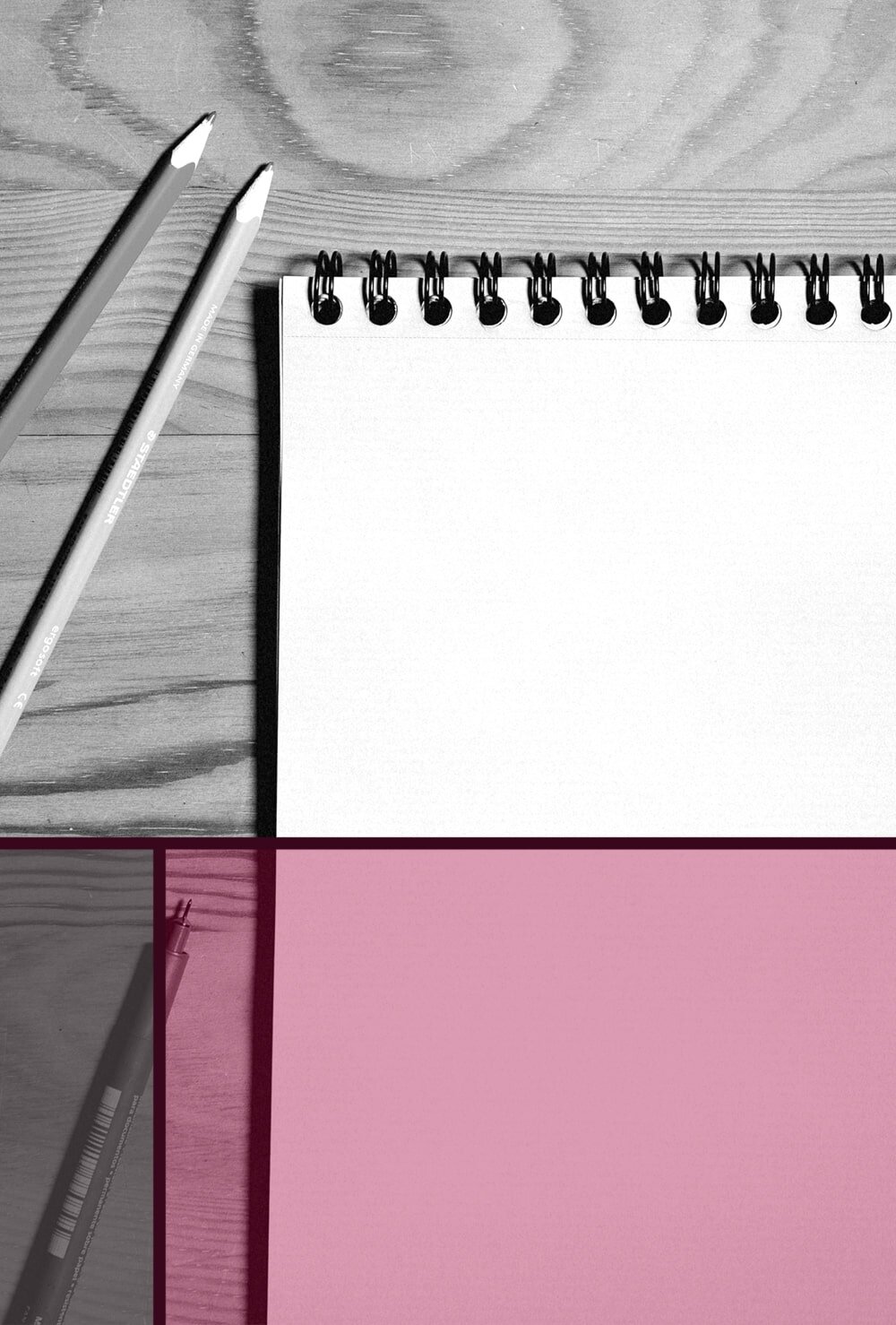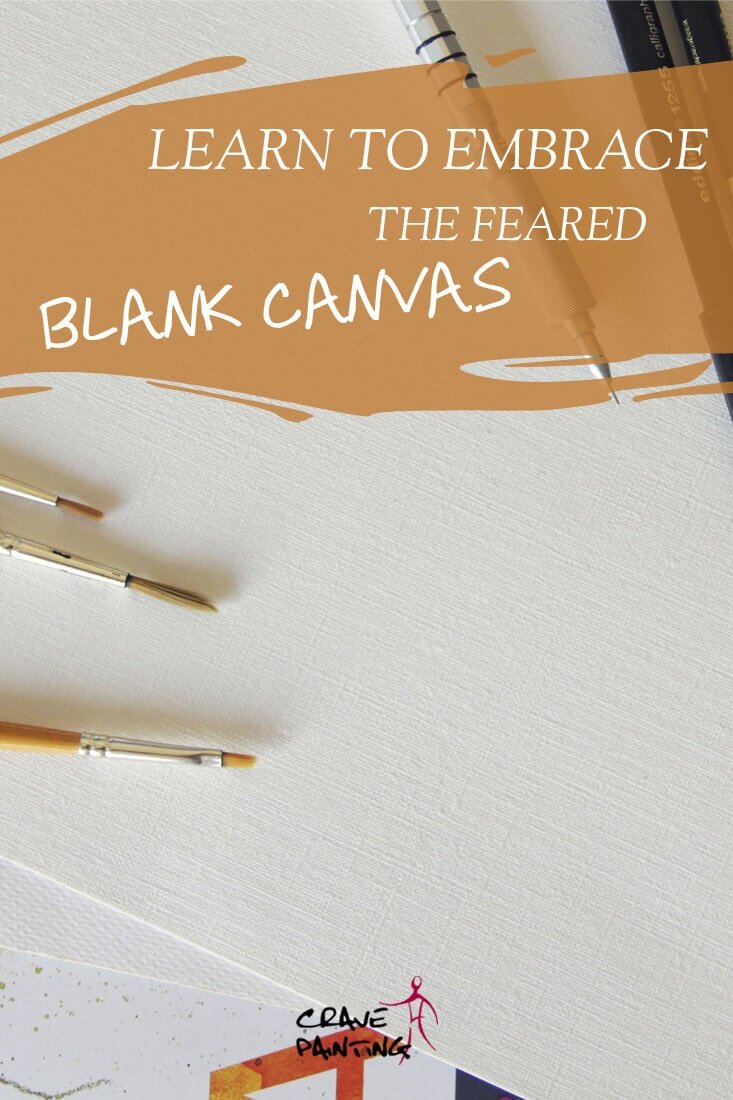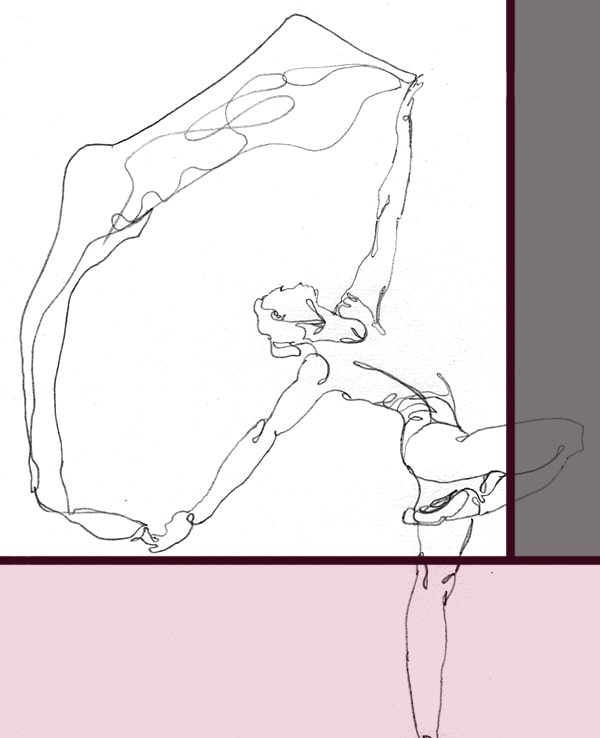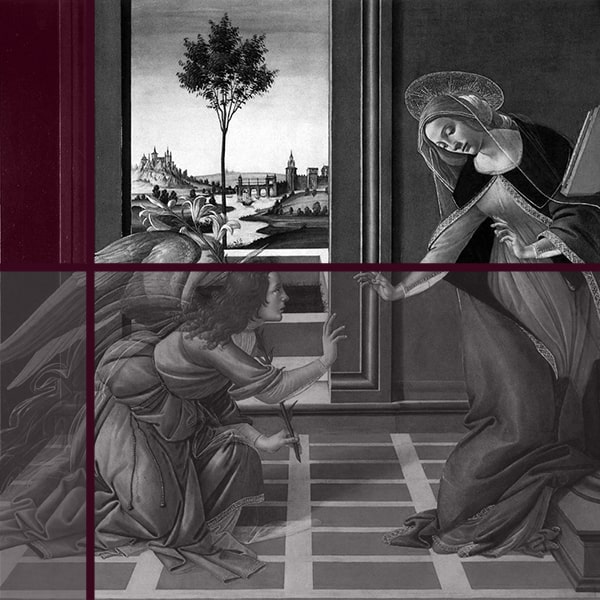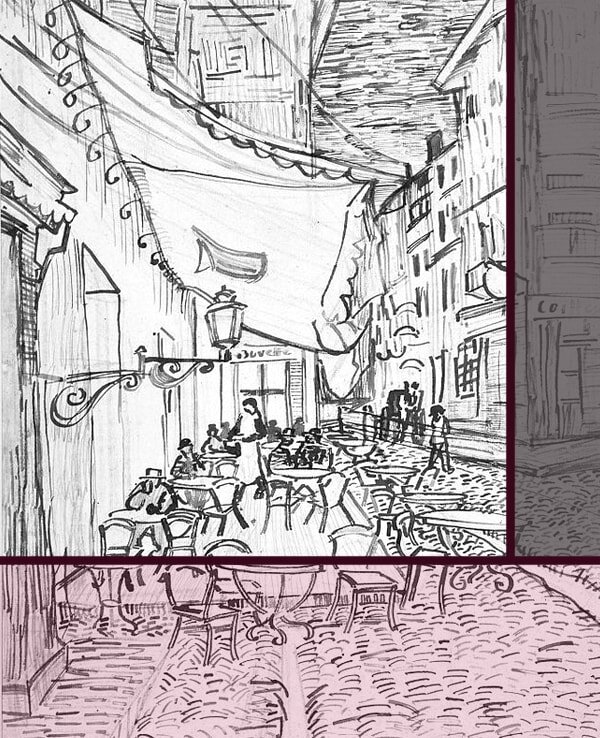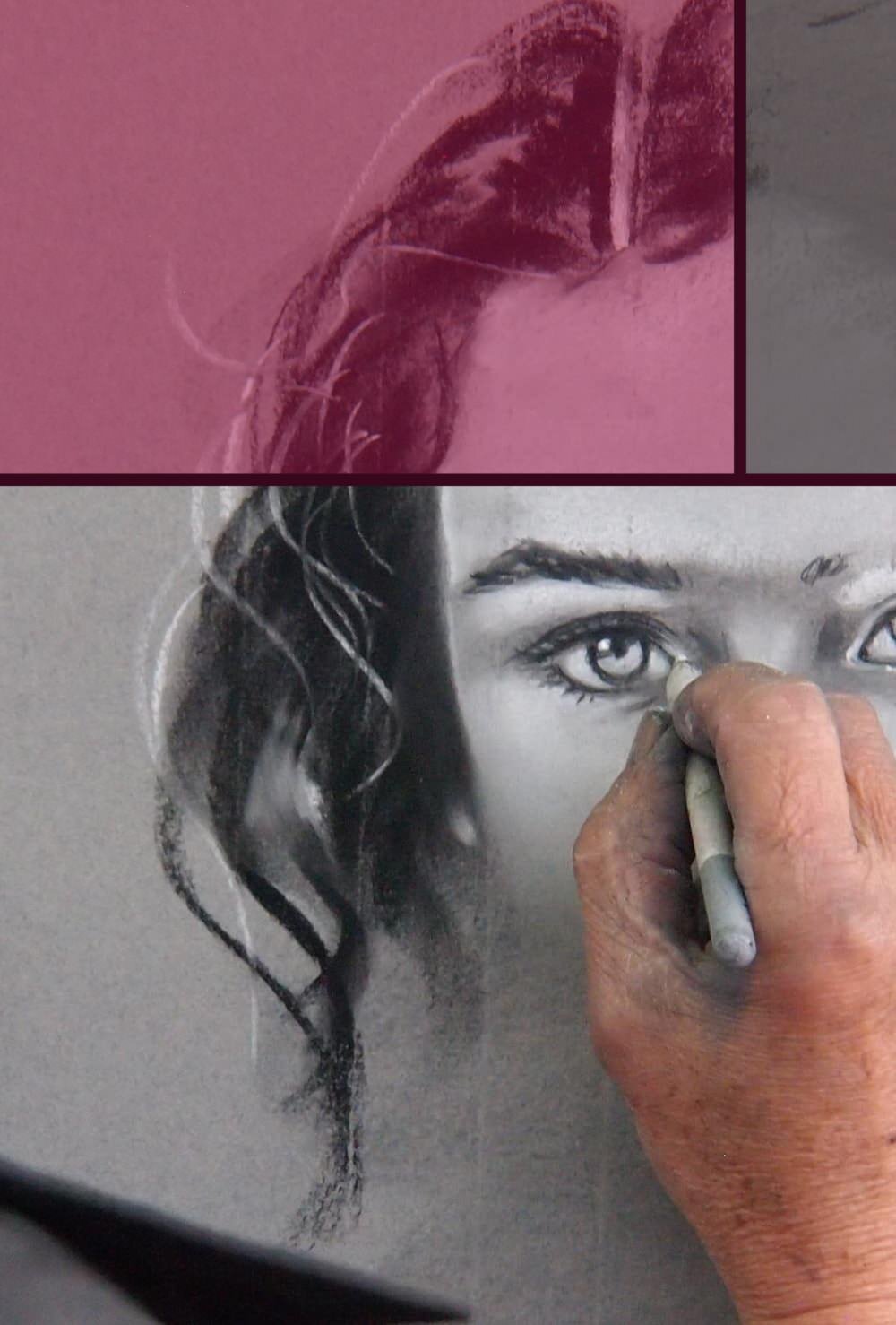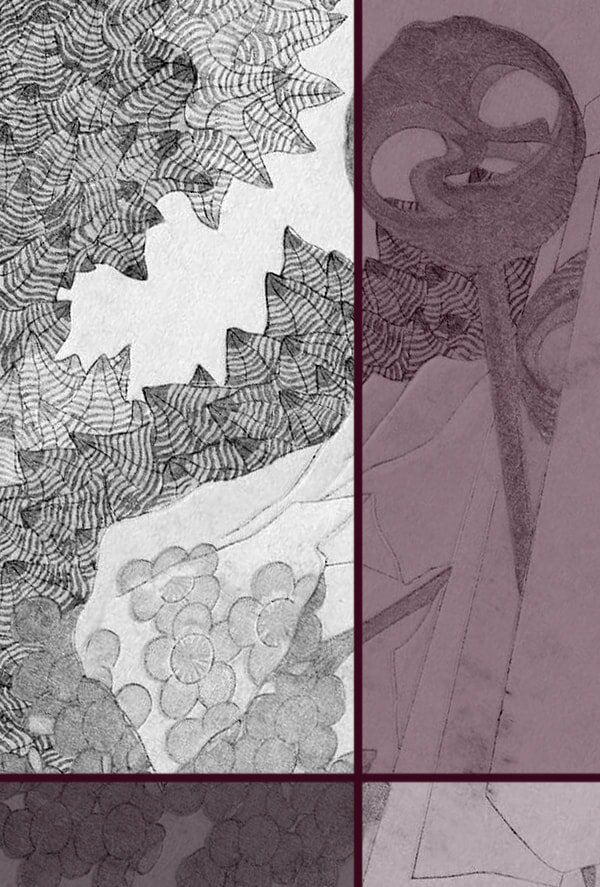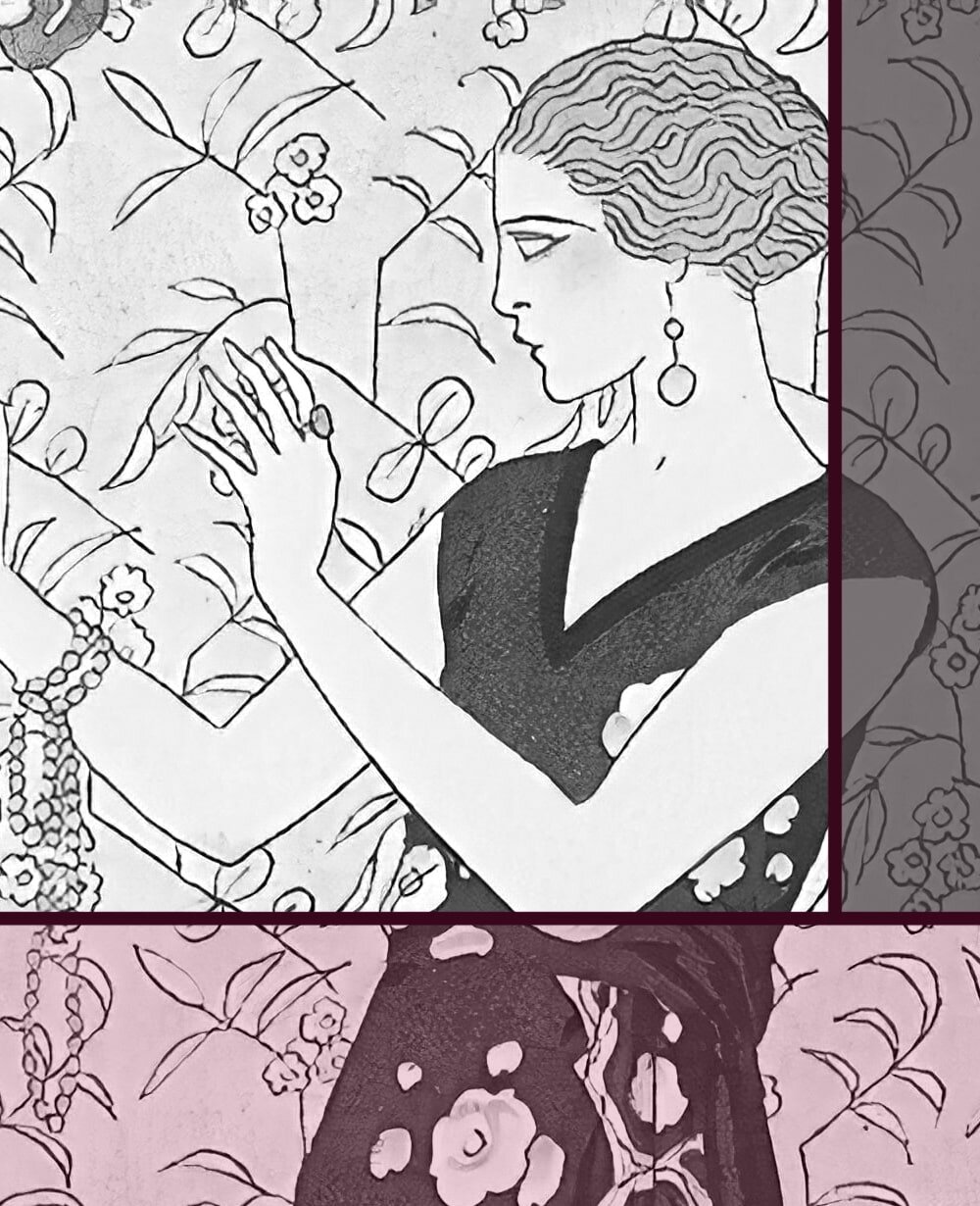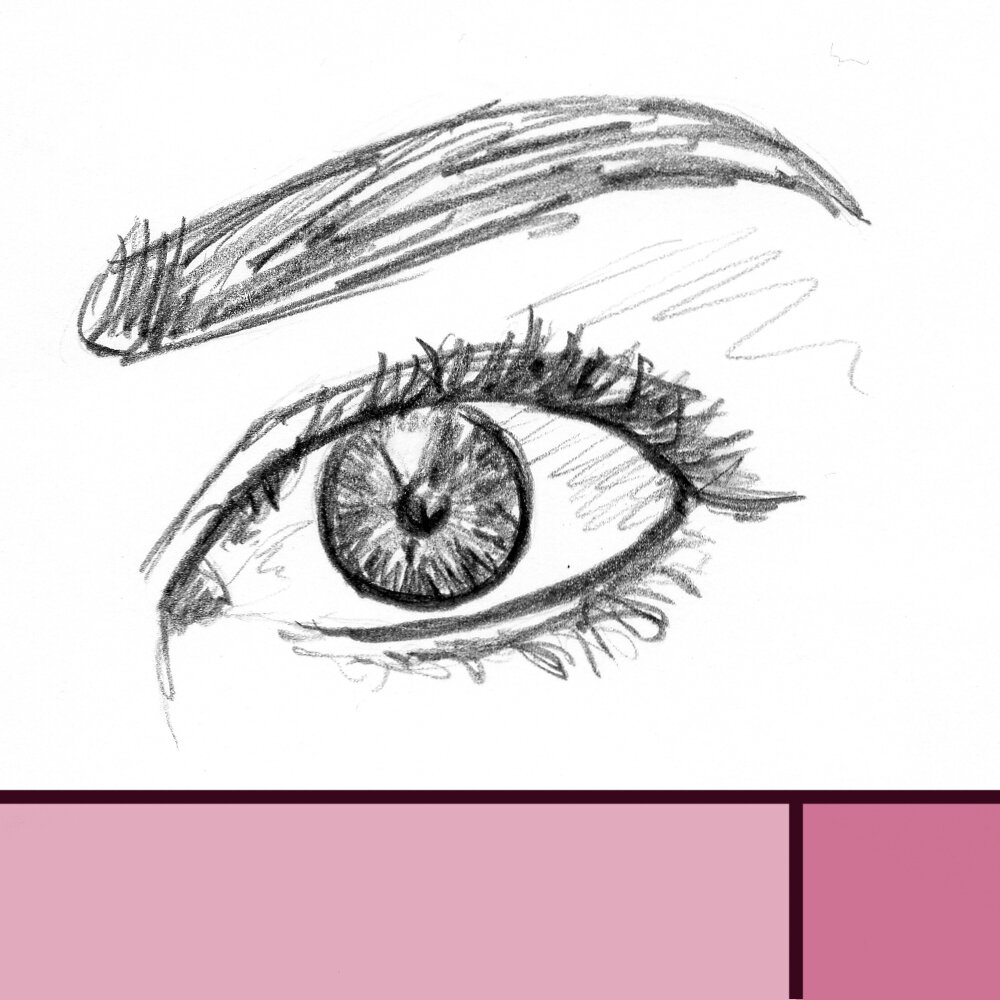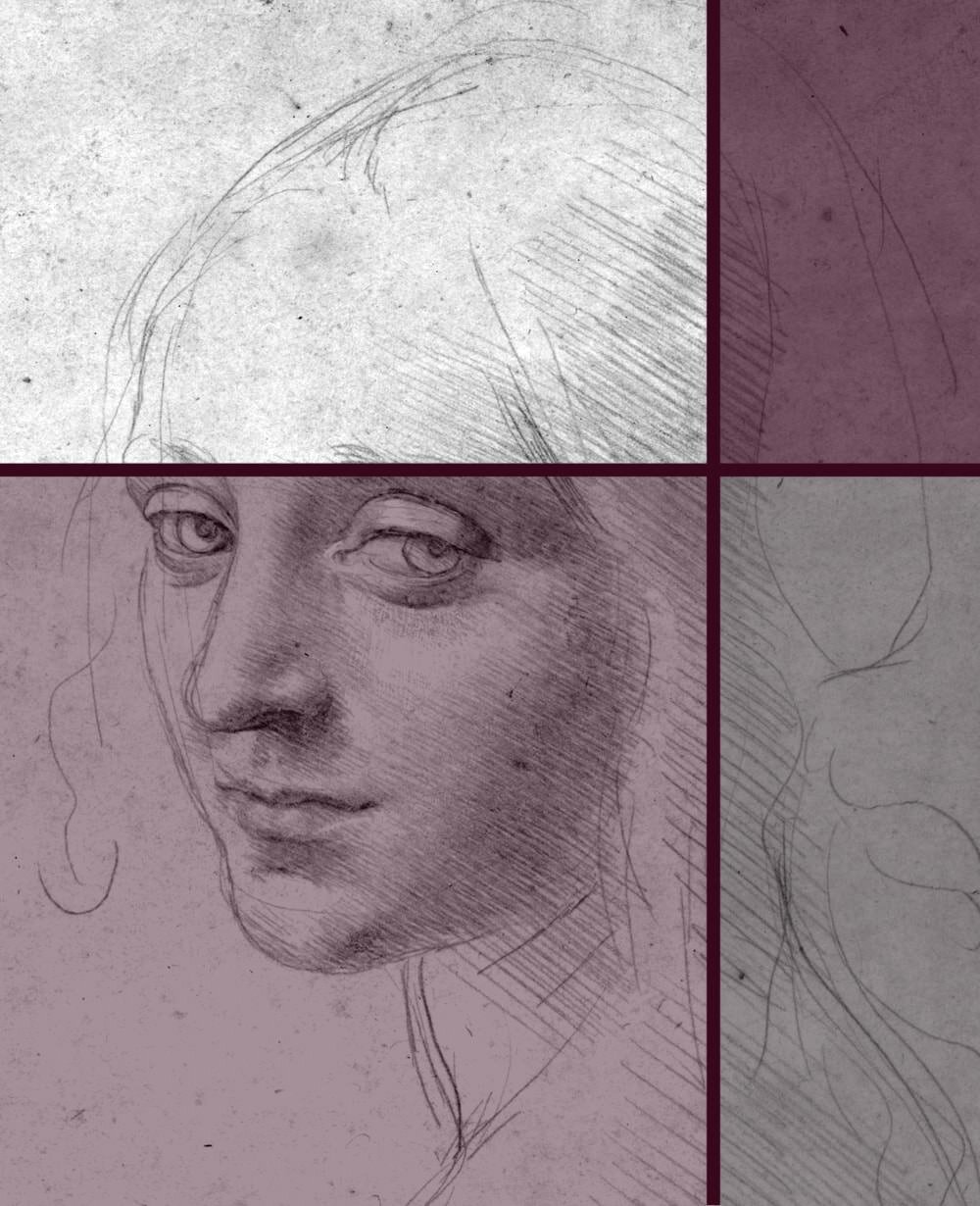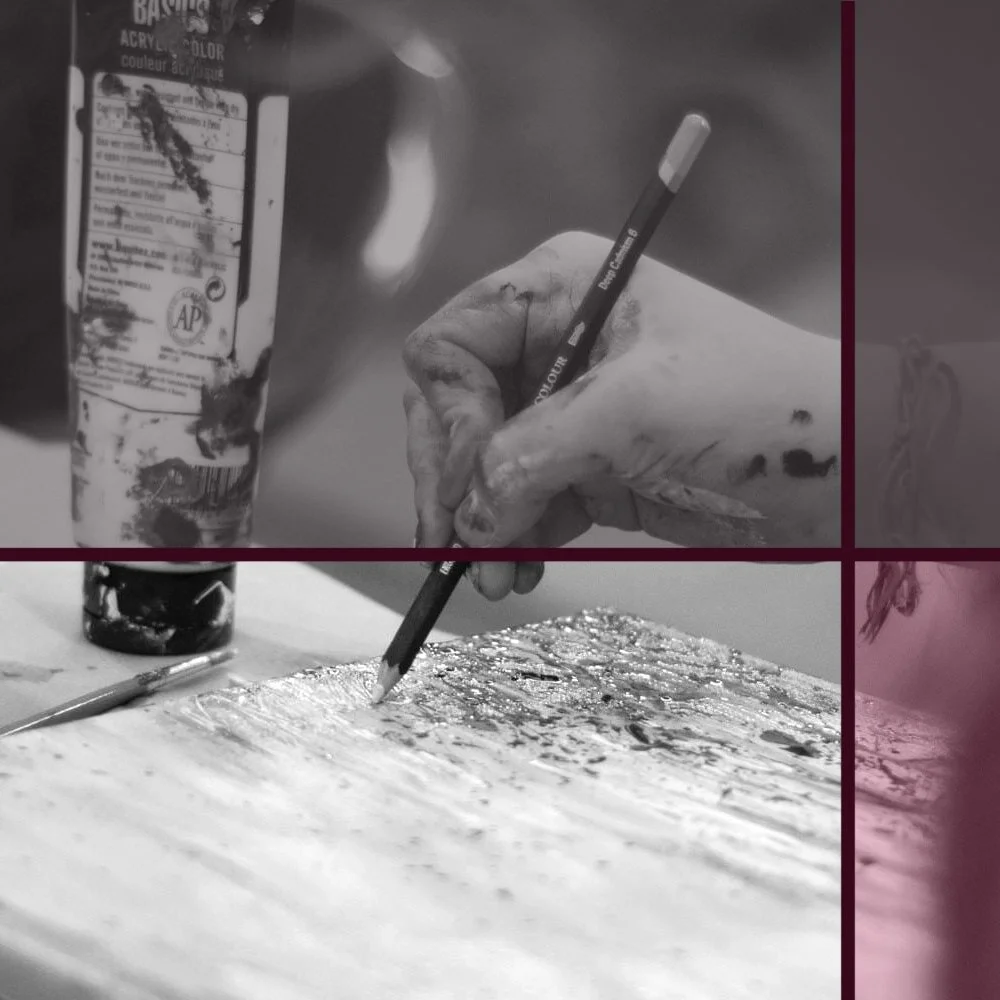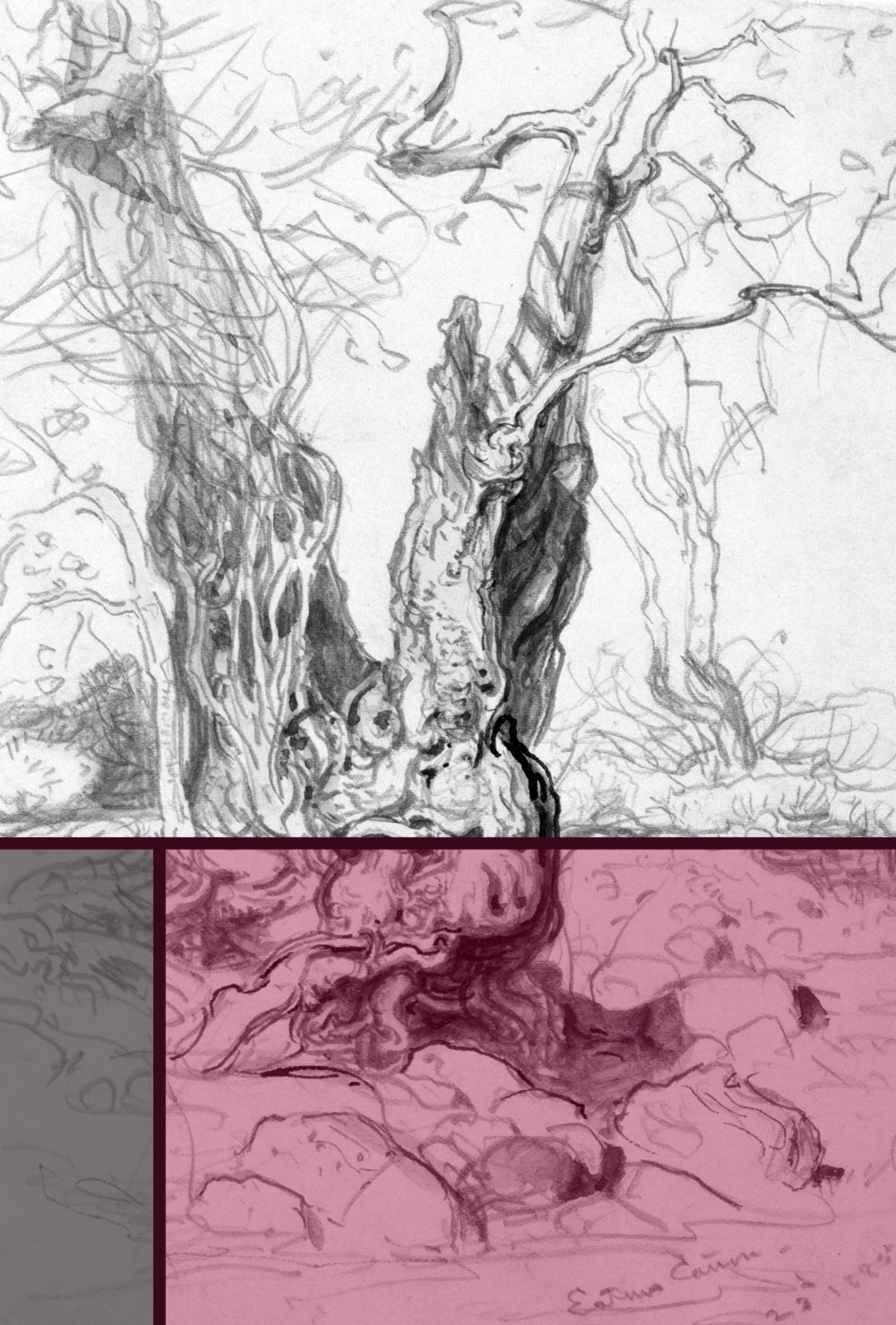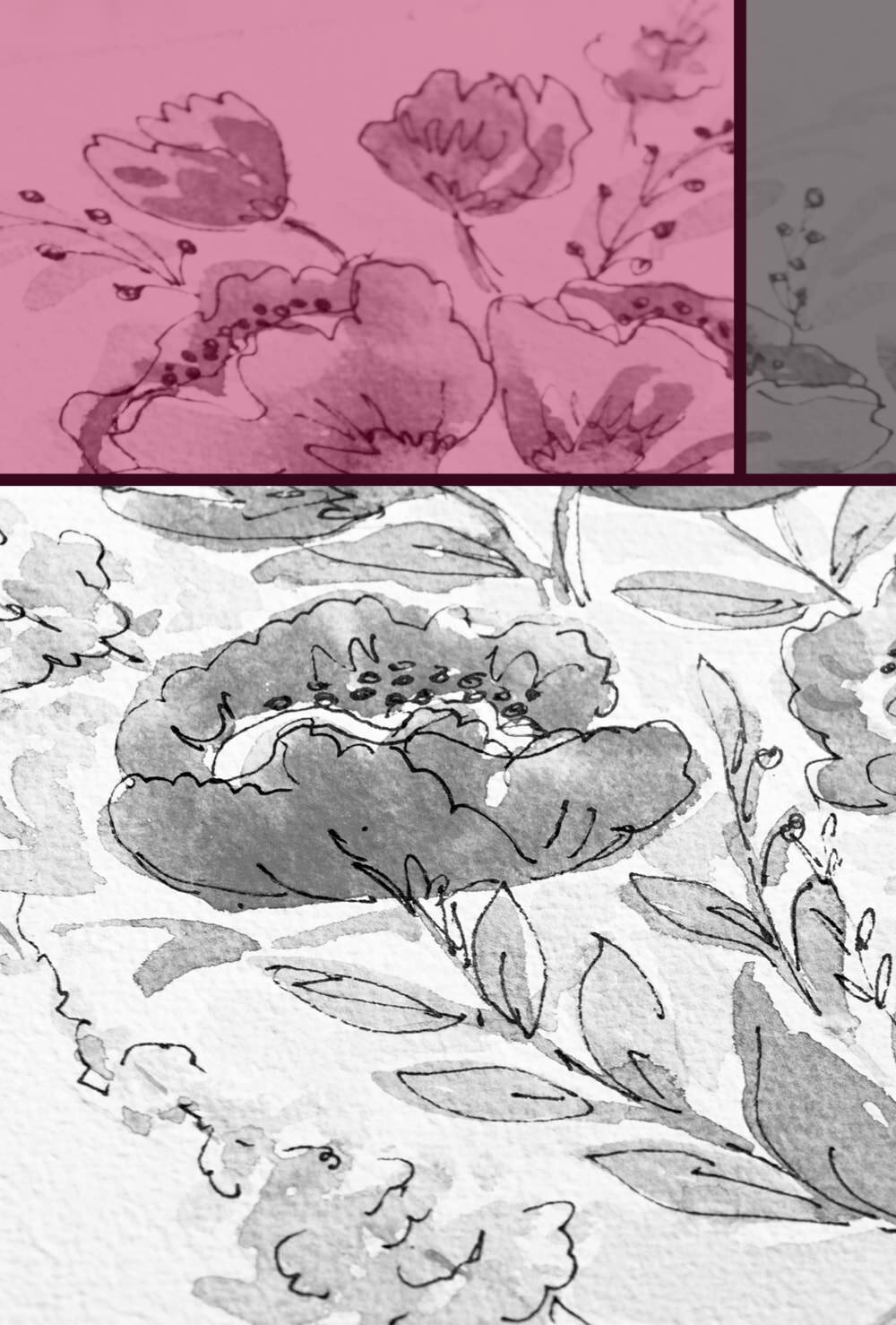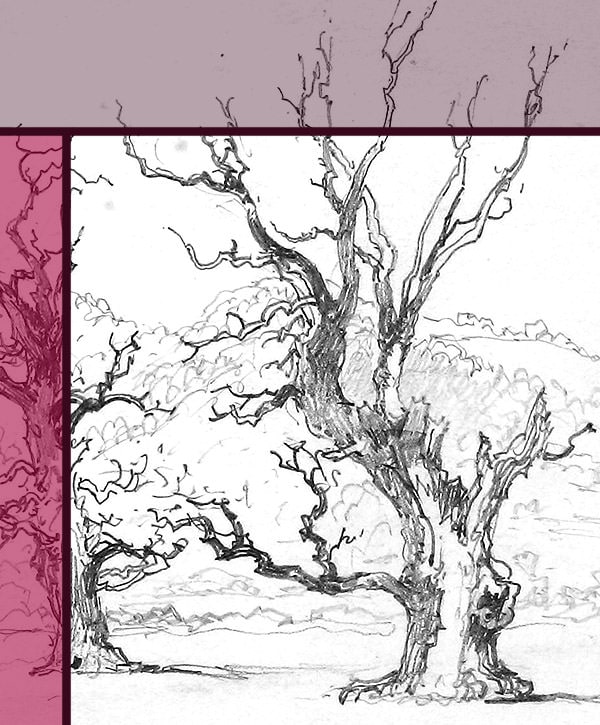How to beat Blank Page Syndrome in the Arts
Sound familiar? You've taken the afternoon off, you've got the pencils (or brushes) out but you just can't seem to get anything down on paper.
So, instead you're doing laundry, prepare dinner, watch a bit of telly. Until it's already evening and too late to start anyway.
What is blank page syndrome?
Blank page syndrome is usually associated with writer's block, but it's very much a thing for any creative activity, visual arts included.
It's a frustrating situation when you want to draw or paint, but you just can't get yourself to actually do it. So you end up doing basically anything else and hours, days, even weeks can go by without you having drawn a single line.
And you're not even sure why. You like drawing, you've got the skills (at least enough to get something down on paper) and you're not under any particular stress or pressed for time either. And yet, nothing.
In order to overcome "artist's block" and get you started and on your very best way to a new masterpiece I've prepared this handy list for you.
1 Get in the mood
The right mindset, for any kind of activity, is often more important than people realise. No point planning an artsy afternoon when your head's not in the game and you're really just thinking about what last minute holiday to book or what else you might need to prepare for tomorrows staff meeting.
In such cases, when you're sure to remember more things that need doing the second you sit down and want to relax a little, it helps to simply have a notebook close by. That way you can quickly write down everything that pops into your head and tackle the list later.
Even if you're not busy planning anything, you'll have to accept that sometimes you're just not in the mood. Maybe you're tired or anxious or angry about something.
You can either simply call it a day and postpone the drawing session until you're less distracted, or you can try and help things along with a little incentive.
Personally, I find that creating an extra cosy atmosphere helps my artsy mood along quite a bit. I turn up the heat, put on some fire crackling or thunderstorm ambience sounds (my absolute favourite is this Hobbiton inspired version) and light a scented candle.
2 Set a time frame
This tip sounds so obvious, but it still often gets ignored. Don't just plan to "draw a little", set yourself an actual time frame. Say, you'll sit down for one hour, with no interruptions from 4-5 pm Sunday afternoon.
Make sure that you're “watered and fed” before you start, then turn off your phone and don't get up before the hour is over. You can use a time tracking app to help with this, such as the most adorable forest app that I've mentioned in my post about time-management.
It's amazing how often we break our good intentions and still do something else "just quickly" whether that's packing the gym bag for tomorrow or taking the chicken out of the freezer. Either can surely wait an hour without your life falling into ruin.
Once we sit down for a drawing session we’ll suddenly remember all sorts of other responsibilities. The trick is not to listen.
Yes, this all makes drawing sound more like a chore than a fun pastime, but with so many distractions and addictive, fast-food-style entertainment like Netflix and social media in our daily lives sometimes we just need to force ourselves to do what's good for us.
3 Silence that judgemental part of your brain
This is a different kind of mindset that might need correcting, if you're prone to impostor syndrome. Many of you will know the feeling, you're just getting the first couple of lines on that paper and already there's that dark part in the back of your mind rolling its eyes and shaking its head.
“Looking at how inadequate your work is, why are you even bothering? Clearly you've got other things you can do that you are better at, like laundry, or doing a course for your actual job. Leave the arts to someone with more talent, why don’t you?”
There is absolutely nothing more toxic to the enjoyment of any kind of hobby than wanting to excel at it. Other than perhaps comparing yourself with others.
There is nothing more toxic to the enjoyment of any kind of hobby than wanting to excel at it.
Which is why you should really try to stop doing either. You can read more about it in my post about common pitfalls when taking up a new hobby.
As the wise Julian Smith would say: "The goal is not to succeed, just to sit down and do it".
4 Decide what to draw beforehand
Ideally you'll collect possible subjects at times when you're not drawing. That'll save you a lot of time and frustration later when you're actually sitting down for it.
Whenever you see something interesting just take a note of it. That might be how the early morning light falls into your kitchen window at this time of year, or that pretty historic chapel you walked past in the city last week.
It’ll save you a lot of time if you get into the habit of collecting subjects to draw when you’re not being creative.
I have a folder with subjects that I can draw if I ever lack inspiration. Every time I come across anything pretty, I write it down or take a photo and save it for a rainy day.
Do keep in mind not to neglect drawing from real life, as that’s the best option to enhance your skills.
I have also collected 100 drawing ideas for you in case you ever get stuck.
Because chances are, if you don't yet know what you want to draw when you actually have the time for it, you won't be able to think of anything so ad hoc. It's much like someone asking you to "say something funny". Even if you're usually the life of the party, in that moment your mind will probably go blank.
5 Think about your composition
Knowing your subject is a good first step, but you'll also need to consider what part of it you want to immortalise and what you want to focus on.
Say you have decided to sketch your garden because it looks ever so nice in its autumn colours. You're going to want to think about which part of your garden then. Perhaps that nice maple tree there with the shrubs behind.
If you know what format you want (landscape, portrait, square etc.) you can then plan where on the sheet to put your focal point (the maple tree) as that'll affect what other parts left and right of it you can show as well. If you find this difficult you can buy a viewfinder (or just make your own from a bit of cardboard).
Girl on the Beach painting by Max Nonnenbruch as an example for the Rule of Thirds
The focal point, of course, is the part of your drawing that you'll spend most time on as it's what catches a viewer's eye the most.
Usually placing the focal point a bit to the side rather than directly centred on the page makes for a more interesting composition, but that's entirely up to you.
Planning all this will help the piece take form inside your mind and make the actual act of getting it on paper much simpler.
For more in depth info on composition be sure to pop by my article Composition in the Arts: How to plan a Drawing or Painting.
6 Work out your agenda and stick to it
You've probably already decided if you're going to work with pencil or charcoal (or water colour, acrylics etc) for today's session, but it's also a good idea to choose beforehand what kind of drawing you'll be doing.
Especially if you have a limited time frame you don't want to waste it having your approaches all over the place and not getting anything worthwhile out of it at all.
Before you lift up that pencil consider if you're going to concentrate on several quick sketches today or do one detailed drawing.
You wouldn't believe how often I started a quick-sketch session and ended up spending a half hour on some intricate detail, before I followed my own advice on this matter.
Will you be practising shading today? Or perhaps gesture drawing. Or maybe you just want to create something pretty you can hang on the wall or put in your portfolio. Either way, knowing this before you start will help you not to get side-tracked and lose focus.
7 Warming up is not just for athletes
If you think you can jump right in and create a masterpiece from the first minute of sitting down, think again. Professional artists know about the need and value of warming up first, so let’s follow their advice.
Doing a few quick sketches to practise your lines and your eye is as important for an artist as stretching is for an athlete. Drawing requires a different way of seeing than your everyday activities, so it's good to give your mind a couple of minutes to adjust.
My article 12 simple Warm-Up Exercises that will Transform your Drawing Practice will give you some pointers on what to practice for what kind of drawing.
8 Make a plan, on the page
So, you've got your subject, you know where you want your focal point and in what style you're going to draw today. Time you get to it then.
Instead of beginning to draw at a random point on the page and work it from there, it's always best to draw a very rough outline first, so you know where everything goes.
This helps you figure out where the objects you are drawing are in relation to each other and work out size differences before it's too late. Nothing worse than having that garden scene almost finished and then realising that bench came out unnaturally large.
It also makes sure you use your sheet or canvas space, so you don't have lots of blank space on the sides or run out of paper.
I find it's easiest if you start with simple boxes (make sure the lines are thin enough to erase later) and then just draw the rough outlines of the objects inside.
I’ve written an article about How to create a Drawing or Painting in 9 simple Steps with more detailed instructions.
9 Sketch regularly
I didn’t always listen to my own advice in this matter. Too often I didn’t draw for weeks and ended up completely out of shape when I did resume my favourite hobby.
That’s why I created the Sketching Project, so it’s a lot easier for me to get some daily practice in and never run out of things to draw.
If you make drawing a regular activity your mind will struggle much less against it when you actually want to sit down for it. The goal is to stop seeing art as a special event.
As long as drawing is something out of the ordinary your mind will try to justify postponing this “intrusion into your daily schedule” and find "more suitable" times for it, when it should instead be a part of your day.
You should see art as part of your weekly schedule, not a diversion or intrusion.
There is always something else you could be doing and you are never in the perfect mood for it (be honest, who of us is not constantly anxious, stressed or preoccupied these days).
If you draw often, ideally every day, the activity will become part of your schedule, and something you ‘just do’, without mental debate or getting stuck on the subject.
Did you enjoy this article or feel like you have anything else to add? Feel free to leave me a comment below!
If you like this post, please share it, so others may like it too!

